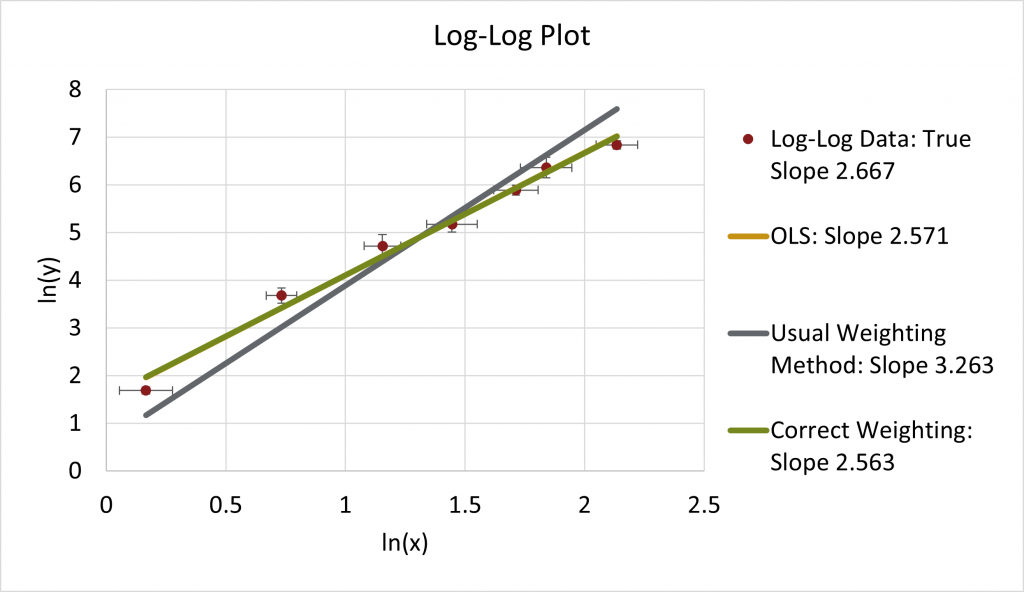Weighting logarithmic data
Be careful weighting logarithmic data!
As discussed in the section Overview of Least Squares, the ordinary least squares method (OLS) does not take the uncertainties into account. In order to include this information, we normally weight each data point by its uncertainty:
- We replace
 and
and  .
. - We then plot
 vs.
vs.  ,
, - Fit this new plot.
- Use that slope.
- Recalculate the intercept using the fact that the best fit line must pass through
 .
.
When looking at a plot involving logarithms, you may be inclined to follow the same procedure:
- Instead of plotting
 vs.
vs.  , you would probably plot
, you would probably plot  vs.
vs.  .
. - Fit this new plot.
- Use that slope.
- Recalculate the intercept using the fact that the best fit line must pass through
 .
.
Key Takeaways
This procedure is incorrect! To see why, we need to recall that for logarithms

 .
.
This second property is key! It means that to weight the data, we should not multiply, but add!
The correct procedure is then:
- Instead of plotting
 vs.
vs.  , you should plot
, you should plot  vs.
vs.  .
. - Fit this new plot.
- Use that slope.
- Recalculate the intercept using the fact that the best fit line must pass through
 .
.
Examples
Dummy data
Consider the dummy data in the table below. These data were generated by adding noise to ![]() .
.
| 1.180499 | 0.131821 | 5.39407 | 0.418129 |
| 2.080013 | 0.133082 | 39.58304 | 6.400246 |
| 3.173837 | 0.243102 | 111.9454 | 26.41957 |
| 4.244258 | 0.447769 | 176.9608 | 29.47852 |
| 5.544937 | 0.518255 | 361.4891 | 36.77549 |
| 6.29372 | 0.679241 | 577.9257 | 124.7652 |
| 8.456563 | 0.733756 | 933.2456 | 81.81379 |
The graph of these data, which is obviously non-linear is shown below
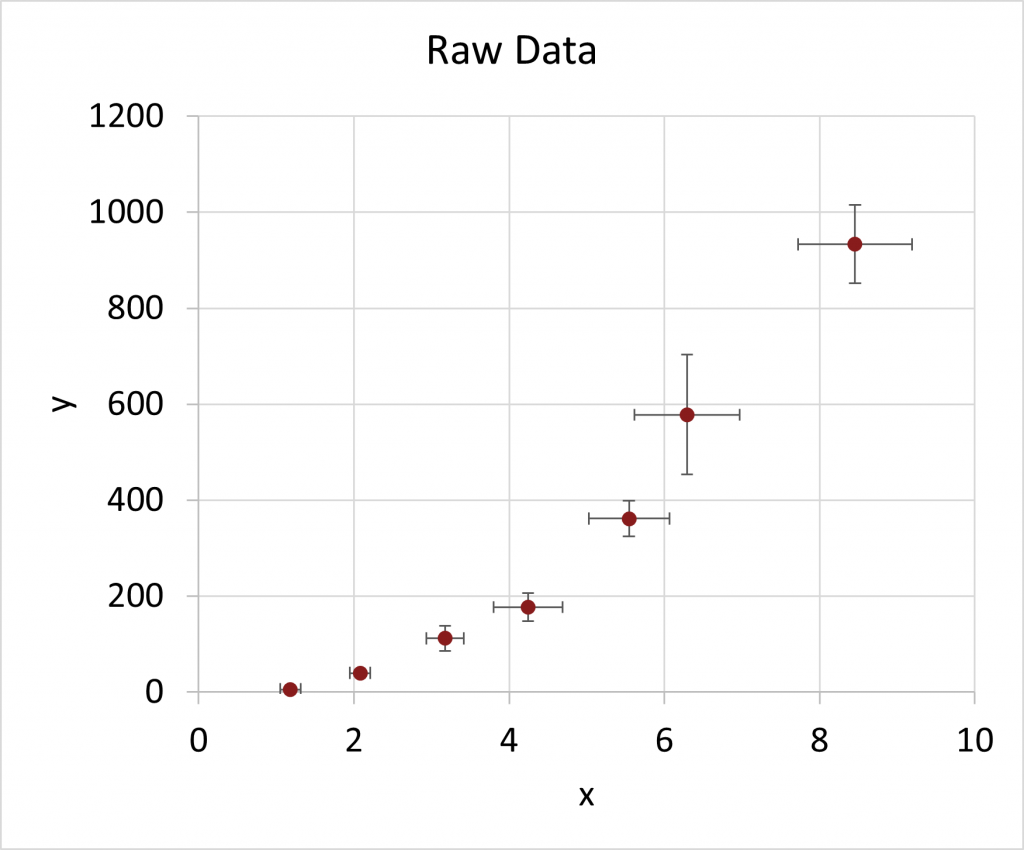
Linearize the Dummy Data Using Logarithms
To linearize the data, we do a log-log plot. I will use log-base-e or natural logarithm ![]() . The result is, as expected, a straight line. The “correct” slope of this line should be
. The result is, as expected, a straight line. The “correct” slope of this line should be ![]() as that is the formula I used to make the data.
as that is the formula I used to make the data.
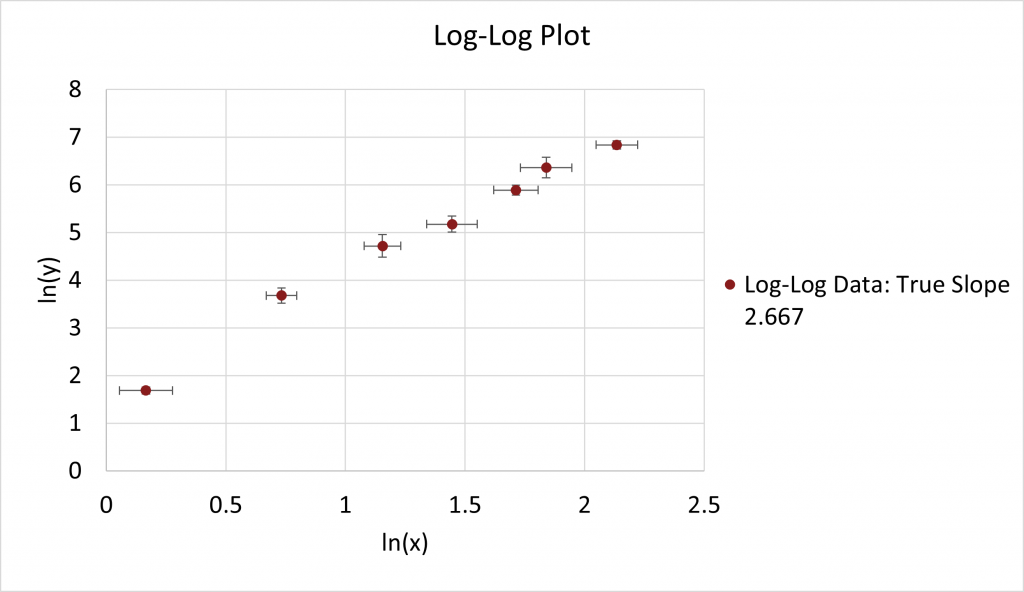
Do Our Usual Weighting Procedure
If we do our usual weighting procedure ![]() vs.
vs. ![]() , the result is a slope that is 3.263. This fit looks pretty bad, and the result is far from the “true” value.
, the result is a slope that is 3.263. This fit looks pretty bad, and the result is far from the “true” value.
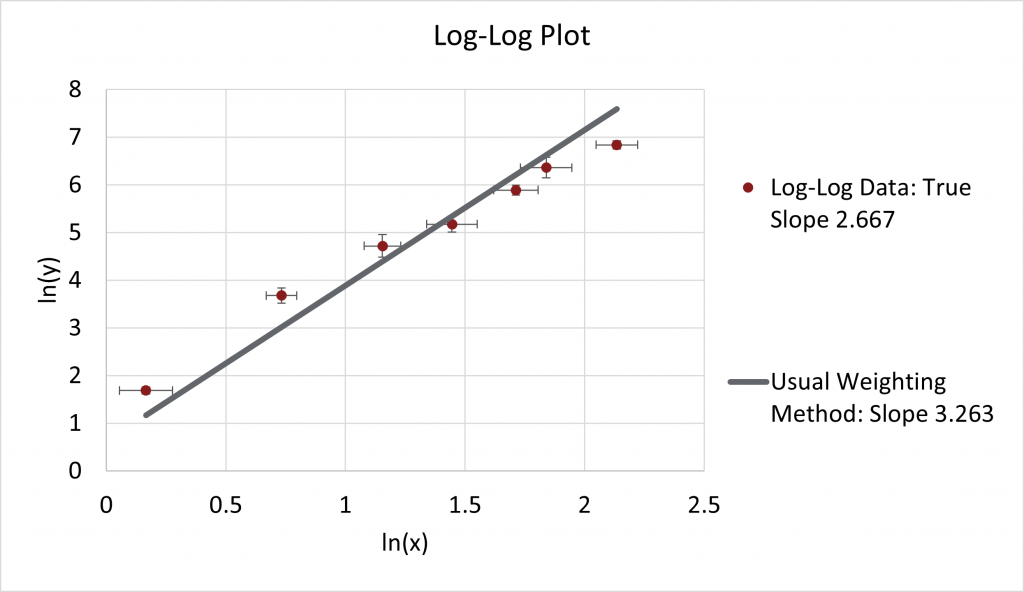
This fit looks particularly bad when the default ordinary least squares fit, OLS, yields a slope of 2.571:
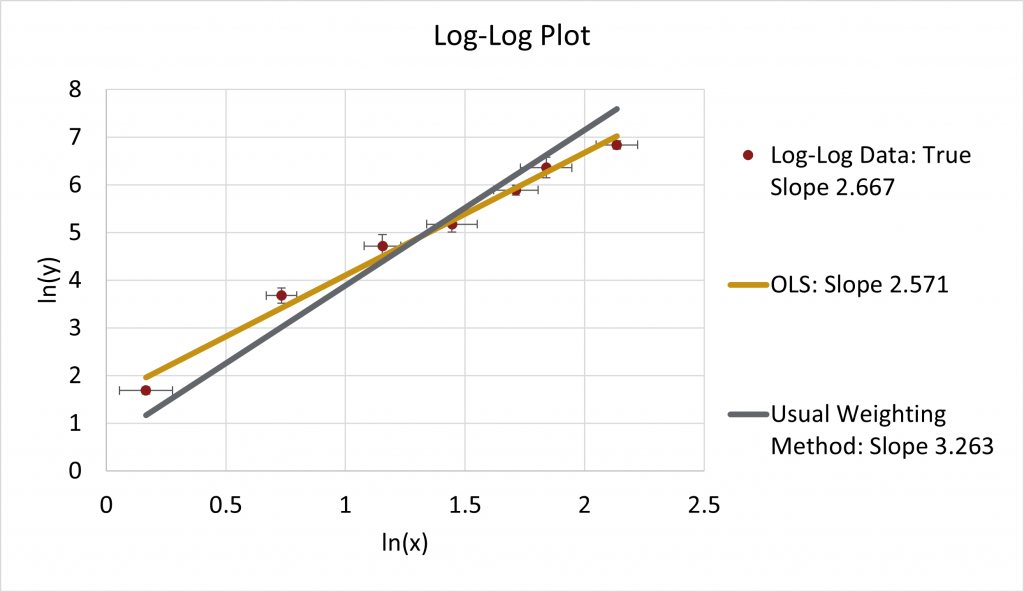
Correct weighting
In contrast, the weighting done with addition: ![]() vs.
vs. ![]() yields a slope of 2.563, back in the correct range.
yields a slope of 2.563, back in the correct range.
